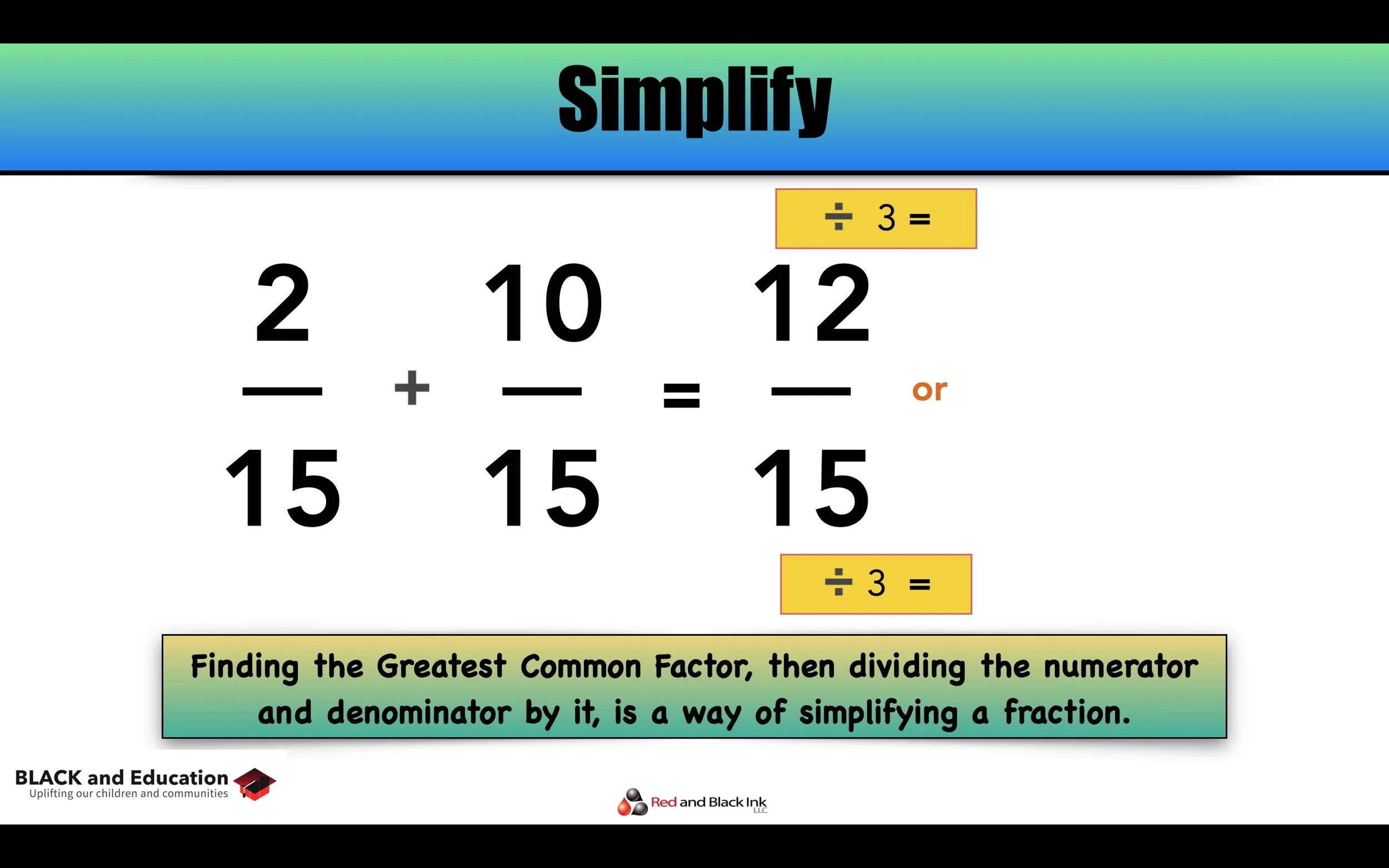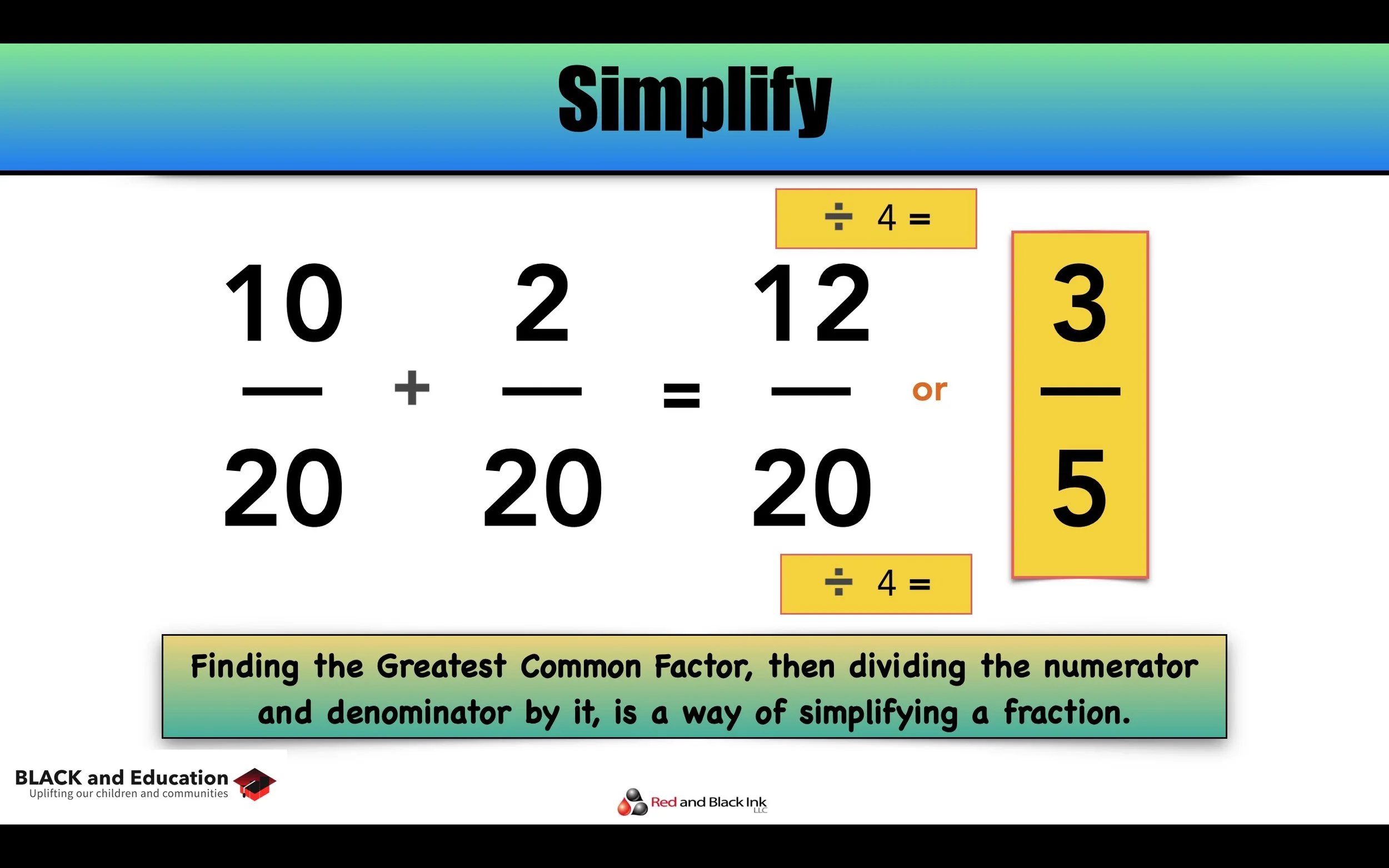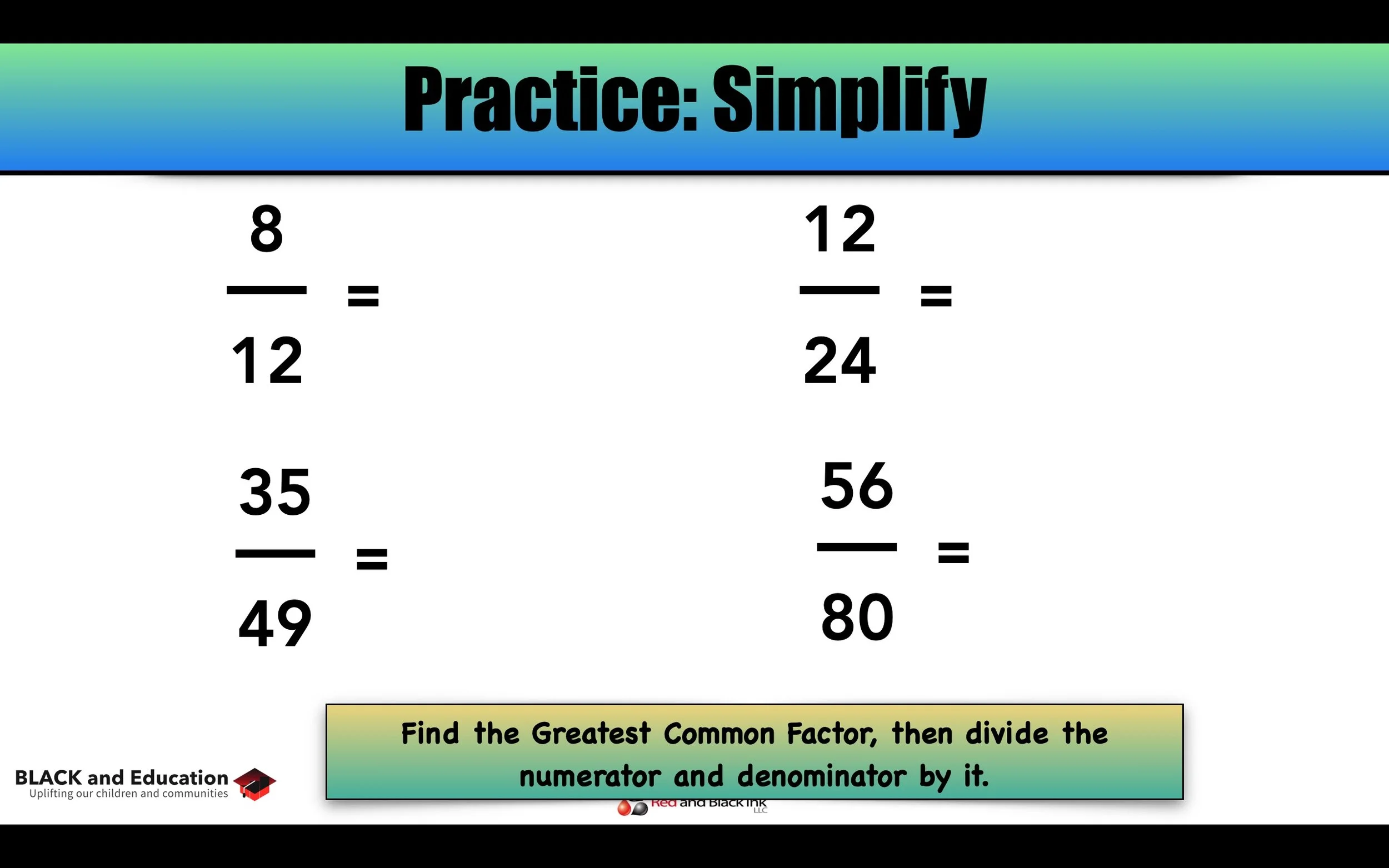Fractions: Simplifying
Teach Your Kid at Home: Fractions Workbook
Teach Your Kid at Home: Fractions includes simplifying, adding, subtracting, unlike denominators, mixed numbers, multiplying and dividing.
Why Do We Need to Simplify?
Let’s say that a basketball player shot the ball 15 times in game and made 5 of them—he made 5/15 shots. Well, we could go around saying he made five out of fifteen shots or we could say he made one third of his shots.
So, when we deal with fractions, we can sometimes make them simpler to understand, take for instance this addition problem:
When we add two fractions, we know we can simply add the numerators—if the denominators are the same. But, in the case of 2/15 + 10/15 — which is equal to 12/15 — we can make the answer simple for everyone.
2. Greatest Common Factor (GCF)
When you work with fractions, sometimes the numerator and the denominator of a fraction have different factors that they share in common.
factor * factor = multiple
A factor is a number multiplied by another factor (number) to get an answer (which is called a multiple).
5 * 3 = 15
5 and 3 are both factors of 15.
Note: Multiples can also be evenly divided by their factors (in these cases, we are dealing with no remainders).
As it turns out, in our example, twelve and fifteen both share common factors. Every number will share a common factor of one (because 1 * any number is equal to that number). But, if we look for the greatest (or highest) factor that our numbers have in common, we can simplify them, when they are in the form of a fraction.
12 and 15 share a greatest common factor of 3, so we can use it to simplify the fraction 12/15.
This works, find the greatest common factor that the numerator and denominator share, then divide the numerator and denominator by it to simplify.
This works, even when you have complicated fractions—with variables, etc. This is why this concept is important to know, because you will use this technique in Algebra and beyond, very often.
Let’s look at another example:
3. Practice Some on Your Own
-
8/12 = 2/3
12/24 = 1/2
35/49 = 5/7
56/80 = 7/10
Summary
So, finding the greatest common factor (GCF) requires that you know your multiplication facts and division facts very well. If you get a problem requiring simplification of a fraction, it will usually pretty straightforward simplification in class—but it can become slightly more complicated when you graduate to higher forms of math, so make sure you know your multiplication facts, now, to make this easier for yourself.
Let’s move on to taking about mixed numbers.






